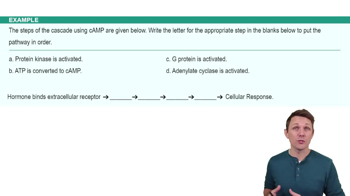Multiple Choice
How do protein kinases affect enzymes?
1706
views
 Verified step by step guidance
Verified step by step guidance Verified video answer for a similar problem:
Verified video answer for a similar problem:



 9:36m
9:36mMaster G Protein-Coupled Receptors with a bite sized video explanation from Bruce Bryan
Start learning